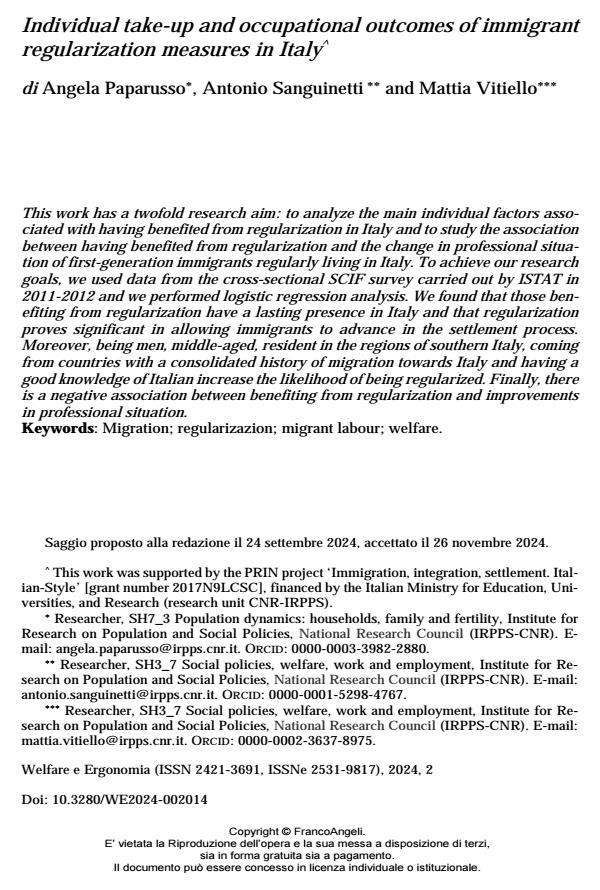Individual take-up and occupational outcomes of immigrant regularization measures in Italy
Journal title WELFARE E ERGONOMIA
Author/s Angela Paparusso, Antonio Sanguinetti, Mattia Vitiello
Publishing Year 2025 Issue 2024/2
Language English Pages 18 P. 211-228 File size 117 KB
DOI 10.3280/WE2024-002014
DOI is like a bar code for intellectual property: to have more infomation
click here
Below, you can see the article first page
If you want to buy this article in PDF format, you can do it, following the instructions to buy download credits

FrancoAngeli is member of Publishers International Linking Association, Inc (PILA), a not-for-profit association which run the CrossRef service enabling links to and from online scholarly content.
This work has a twofold research aim: to analyze the main individual factors associated with having benefited from regularization in Italy and to study the association between having benefited from regularization and the change in professional situation of first-generation immigrants regularly living in Italy. To achieve our research goals, we used data from the cross-sectional SCIF survey carried out by ISTAT in 2011-2012 and we performed logistic regression analysis. We found that those benefiting from regularization have a lasting presence in Italy and that regularization proves significant in allowing immigrants to advance in the settlement process. Moreover, being men, middle-aged, resident in the regions of southern Italy, coming from countries with a consolidated history of migration towards Italy and having a good knowledge of Italian increase the likelihood of being regularized. Finally, there is a negative association between benefiting from regularization and improvements in professional situation. <a href="https://static.francoangeli.it/fa-contenuti/riviste/riviste_allegati/we/we2024-002014-la.pdf" target="_blank" >Long abstract </a>
Keywords: Migration; regularizazion; migrant labour; welfare.
Angela Paparusso, Antonio Sanguinetti, Mattia Vitiello, Individual take-up and occupational outcomes of immigrant regularization measures in Italy in "WELFARE E ERGONOMIA" 2/2024, pp 211-228, DOI: 10.3280/WE2024-002014